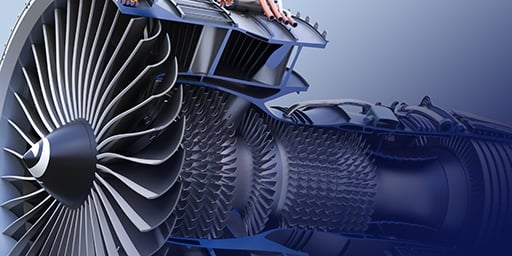If you are working on multiple aircraft, wide or narrow body, from different manufacturers, servicing avionics, seats, and hydraulic systems—this information is for you. We are all busy, trying to process maintenance tasks for aircraft from variety of customers, on time. Why? It’s simple really—providing reliable, high quality repairs for customers will ensure repeat business. In addition, becoming great at on-time performance, brings new opportunities to process more aircraft and provides opportunities to grow your business so you can do more, with existing resources.
Here are some key steps to consider taking when you feel like your business has plateaued and you realize there has to be a better way to complete more MRO business, with high quality. By the way, if you want to learn more after reading this, we are holding a webinar on February 5th at 11 a.m. EST, where we’ll be exploring this topic and can answer any questions you have about ways that you can improve your on-time performance above 90%!
Step 1: Recognize and accept that you have process problems
In any business, recognizing the problems that you are encountering is key. Often, we accept we cannot do more with the existing resources we have—there is no way we can do anything better than the processes we have already established. However, ask yourself, when was the last time you changed the processes for how you do a specific task? Alternatively, how did you come up with the processes to complete maintenance to begin with? It’s more than likely that they evolved over time—without much thought as to whether or not this is this the best approach to run our shop.
Our recommendation is to begin evaluating how you are currently performing by understanding the volume of aircraft or components going through your hanger/shop. Based on this information, figure out what your on-time percentage is. If it is below 90%, there are opportunities for you to improve.
Step 2: Identify was to improve
The objective here is to align people, processes, and the supporting technology to support step change improvements. A good way to start is by using a Lean process improvement approach that identifies a system of steps that allows organizations to reduce waste by focusing on customer value.
This lets you to focus on small steps that can lead to big improvement. An example would be color-coding the service bays to increase the number of aircraft that can be worked on in the same space. More planes in the hangar mean more work performed, improving on-time performance.
An Example – Is your maintenance team walking 100s of miles per year?
Another improvement step that can be quickly analyzed is getting an understanding of what tools in your parts store are used the most. You will more than likely have a top 10 tools list that are requested 80% of the time to perform work.
Then, get an understanding of where these tools are located. Are they in separate parts stores? Are they located up front or in the back of the parts bay? Lastly, how long does a mechanic need to wait to receive these tools? 5 minutes? 20 minutes? One of our customers found they were waiting 18 minutes for tools and walking 400 miles per year between parts stores to get commonly requested tools. Simple fixes reduced wait time to 3 minutes and reduces yearly walking by 90%!
You will probably see the amount of time spent for this process is another opportunity to improve on-time performance. More wrench time equates to more work performed, improving performance, and customer satisfaction.
Final step: Attend the upcoming webinar
Do you want more information on ways to improve on-time performance? Join us for “4 Levers to Improve On-Time Delivery Performance”.
Your business is predicated on fast turnaround time (TAT), on-time delivery, and increasing volume of business. If your on-time delivery performance is below 90%, now’s the time to evaluate your MRO processes and technology capabilities. After all, as aircraft continue to become more and more complex, keeping turnaround time under control won’t get any easier.

